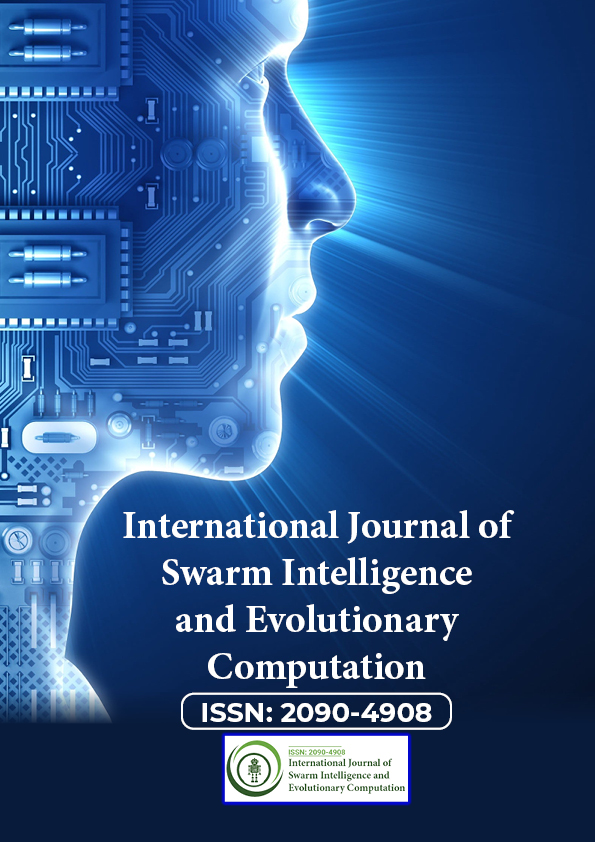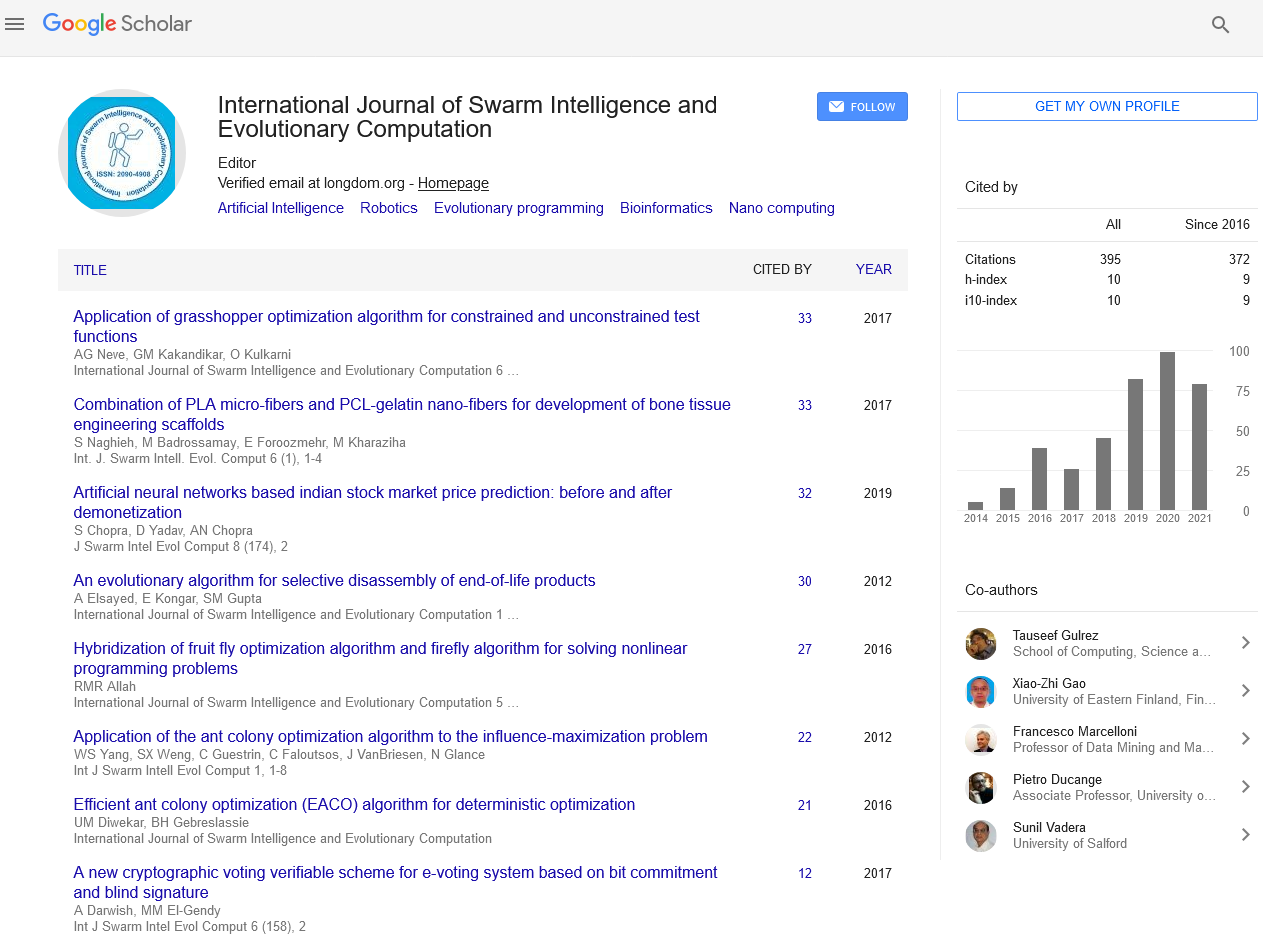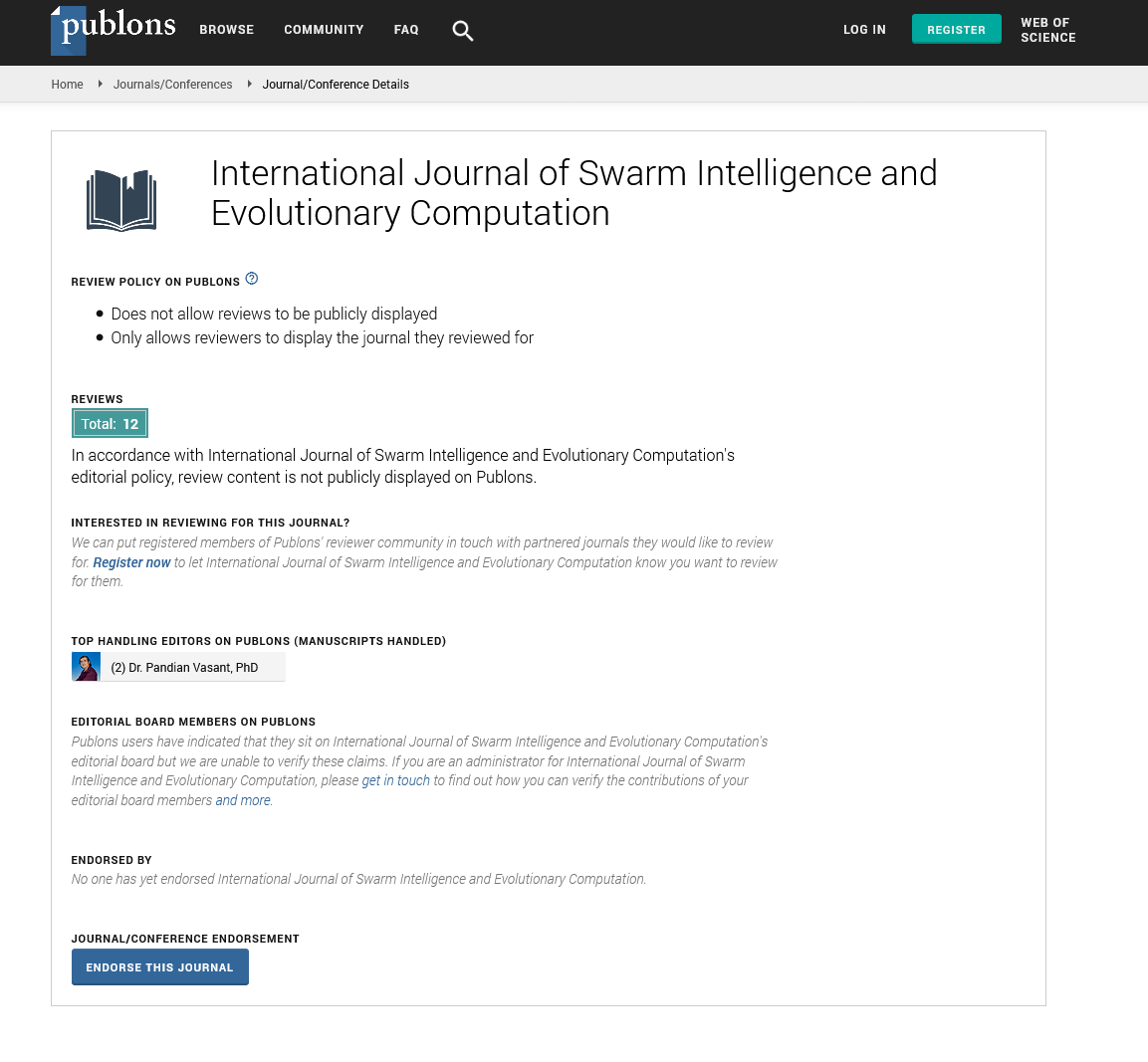Indexed In
- Genamics JournalSeek
- RefSeek
- Hamdard University
- EBSCO A-Z
- OCLC- WorldCat
- Publons
- Euro Pub
- Google Scholar
Useful Links
Share This Page
Journal Flyer

Open Access Journals
- Agri and Aquaculture
- Biochemistry
- Bioinformatics & Systems Biology
- Business & Management
- Chemistry
- Clinical Sciences
- Engineering
- Food & Nutrition
- General Science
- Genetics & Molecular Biology
- Immunology & Microbiology
- Medical Sciences
- Neuroscience & Psychology
- Nursing & Health Care
- Pharmaceutical Sciences
Editorial - (2021) Volume 10, Issue 2
Swarm Behaviour of Animals
Ethan M*Received: 02-Feb-2021 Published: 25-Feb-2021, DOI: 10.35248/2090-4908.21.10.e205
Abstract
Swarm behaviour may be a collective behaviour exhibited by entities, particularly animals, of comparable size which aggregate together, perhaps milling about an equivalent spot or perhaps moving end bloc or migrating in some direction. It is a highly interdisciplinary topic. Swarming is applied particularly to insects, but can also be applied to the opposite entity or animal that exhibits swarm behaviour. The term flocking or murmuration can refer specifically to swarm behaviour in birds, herding to ask swarm behaviour in tetrapod’s, and shoaling or schooling to ask swarm behaviour in fish. Phytoplankton also absorbs huge swarms called blooms, although these organisms are algae and are not self-propelled the way animals are. By extension, the term "swarm" is applied also to inanimate entities which exhibit parallel behaviours, as during a robot swarm, an earthquake swarm, or a swarm of stars.
Description
Swarm behaviour may be a collective behaviour exhibited by entities, particularly animals, of comparable size which aggregate together, perhaps milling about an equivalent spot or perhaps moving end bloc or migrating in some direction. It is a highly interdisciplinary topic.
Swarming is applied particularly to insects, but can also be applied to the opposite entity or animal that exhibits swarm behaviour. The term flocking or murmuration can refer specifically to swarm behaviour in birds, herding to ask swarm behaviour in tetrapod’s, and shoaling or schooling to ask swarm behaviour in fish. Phytoplankton also absorbs huge swarms called blooms, although these organisms are algae and are not self-propelled the way animals are. By extension, the term "swarm" is applied also to inanimate entities which exhibit parallel behaviours, as during a robot swarm, an earthquake swarm, or a swarm of stars.
Swarm behaviour was first simulated on a computer in 1986 with the simulation program boids. This program simulates simple agents (boids) that are allowed to maneuver according to a gaggle of basic rules.
Models
Mathematical models
The simplest mathematical models of animal swarms generally represent individual animals as following three rules:
1. Move within an equivalent direction as your neighbours 2. Remain close to your neighbours 3. Avoid collisions with your neighbours
The boids bug , created by Craig Reynolds in 1986, simulates swarm behavior following the above rules. Many subsequent and current models use variations on these rules, often implementing them by means of concentric "zones" around each animal. In the "zone of repulsion", very on the brink of the animal, the focal animal will seek to distance itself from its neighbours to avoid collision. Slightly further away, within the "zone of alignment", the focal animal will seek to align its direction of motion with its neighbours. In the outermost "zone of attraction", which extends as distant from the focal animal because it's during a position to sense, the focal animal will seek to maneuver towards a neighbour.
Evolutionary models
In order to understand insight into why animals evolve swarming behaviours, scientists have turned to evolutionary models that simulate populations of evolving animals. Typically these studies use a genetic algorithm to simulate evolution over many generations. These studies have investigated variety of hypotheses attempting to elucidate why animals evolve swarming behaviours, like the selfish herd theory the predator confusion effect, the dilution effect and the many eyes theory.
Algorithms
Swarm algorithms follow a Lagrangian approach or an Eulerian approach.The Eulerian approach views the swarm as a field, working with the density of the swarm and deriving mean field properties. It is a hydrodynamic approach, and should be useful for modelling the overall dynamics of giant swarms.
Ant colony optimization
Ant colony optimization could also be a widely used algorithm which was inspired by the behaviours of ants, and has been effective solving discrete optimization problems related to swarming. The algorithm was initially proposed by Marco Dorigo in 1992,and has since been diversified to unravel a wider class of numerical problems. Species that have multiple queens may have a queen leaving the nest in conjunction with some workers to found a colony at a replacement site, a process like swarming in honeybees.
Self-propelled particles
The concept of self-propelled particles (SPP) was introduced in 1995 by Tamás Vicsek et al. as a special case of the boids model introduced in 1986 by Reynolds. An SPP swarm is modelled by a group of particles that move with a unbroken speed and answer random perturbations by adopting at whenever increment the standard direction of motion of the other particles in their local neighbourhood.
Particle swarm optimization
Particle swarm optimization is another algorithm widely used to solve problems related to swarms. It was developed in 1995 by Kennedy and Eberhart and was first aimed toward simulating the social behaviour and choreography of bird flocks and fish schools.The algorithm was simplified and it was observed to be performing optimization. The system initially seeds a population with random solutions. It then searches within the matter space through successive generations using stochastic optimization to hunt out the only solutions. The solutions it finds are called particles. Each particle stores its position also because the simplest solution it's achieved so far . The particle swarm optimizer tracks the only local value obtained so far by any particle within the local neighbourhood. The remaining particles then move through the matter space following the lead of the optimum particles.
Altruism
Researchers in Switzerland have developed an algorithm supported Hamilton's rule of kin selection. The algorithm shows how altruism during a swarm of entities can, over time, evolve and end in simpler swarm behaviour.
Citation: Ethan M (2021) Swarm Behavior of Animals. Int J Swarm Evol Comput 10:e205.
Copyright: ©2021 Ethan M. This is an open-access article distributed under the terms of the Creative Commons Attribution License, which permits unrestricted use, distribution, and reproduction in any medium, provided the original author and source are credited.


